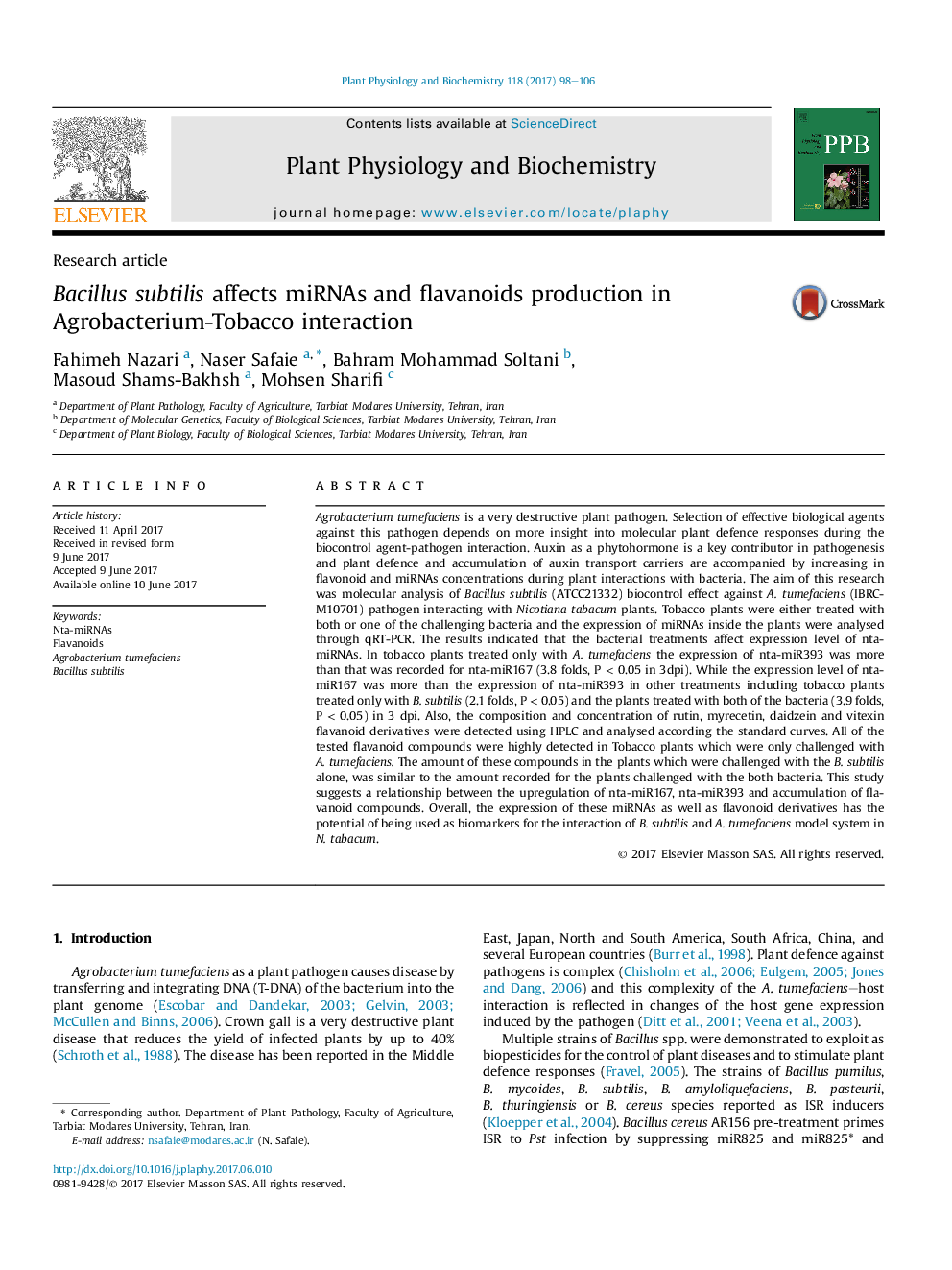| Article ID | Journal | Published Year | Pages | File Type |
|---|---|---|---|---|
| 5515426 | Plant Physiology and Biochemistry | 2017 | 9 Pages |
Abstract
Agrobacterium tumefaciens is a very destructive plant pathogen. Selection of effective biological agents against this pathogen depends on more insight into molecular plant defence responses during the biocontrol agent-pathogen interaction. Auxin as a phytohormone is a key contributor in pathogenesis and plant defence and accumulation of auxin transport carriers are accompanied by increasing in flavonoid and miRNAs concentrations during plant interactions with bacteria. The aim of this research was molecular analysis of Bacillus subtilis (ATCC21332) biocontrol effect against A. tumefaciens (IBRC-M10701) pathogen interacting with Nicotiana tabacum plants. Tobacco plants were either treated with both or one of the challenging bacteria and the expression of miRNAs inside the plants were analysed through qRT-PCR. The results indicated that the bacterial treatments affect expression level of nta-miRNAs. In tobacco plants treated only with A. tumefaciens the expression of nta-miR393 was more than that was recorded for nta-miR167 (3.8 folds, P < 0.05 in 3dpi). While the expression level of nta-miR167 was more than the expression of nta-miR393 in other treatments including tobacco plants treated only with B. subtilis (2.1 folds, P < 0.05) and the plants treated with both of the bacteria (3.9 folds, P < 0.05) in 3 dpi. Also, the composition and concentration of rutin, myrecetin, daidzein and vitexin flavanoid derivatives were detected using HPLC and analysed according the standard curves. All of the tested flavanoid compounds were highly detected in Tobacco plants which were only challenged with A. tumefaciens. The amount of these compounds in the plants which were challenged with the B. subtilis alone, was similar to the amount recorded for the plants challenged with the both bacteria. This study suggests a relationship between the upregulation of nta-miR167, nta-miR393 and accumulation of flavanoid compounds. Overall, the expression of these miRNAs as well as flavonoid derivatives has the potential of being used as biomarkers for the interaction of B. subtilis and A. tumefaciens model system in N. tabacum.
Related Topics
Life Sciences
Agricultural and Biological Sciences
Plant Science
Authors
Fahimeh Nazari, Naser Safaie, Bahram Mohammad Soltani, Masoud Shams-Bakhsh, Mohsen Sharifi,
